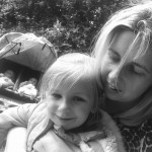Early intervention starts from the head down

Sarah Paull
Sharing fun and chaos of our family life, Whilst helping our twin girls reach there full potential after a brain injury.

We have learnt so much about early intervention in the last 20 months.
I could quite literally write a directory book on what is on offer, how many different therapies all can play a part in a child’s rehabilitation.
I have noticed even between two girls the differences, what makes them motivated whilst the other one screams the place down in protest, we have also found picking our time of day is crucial.
Early intervention is ideal for our girls because it takes advantage of the extremely adaptive features of the developing brain better known as the process of neuroplasticity, making new neural pathways around areas of damage through repetition to produce a muscle memory of correct patterning to improve motor function.
The earlier to start the better, the biggest gain in early intervention is within the first 5 years of life but it can continue well into retirement, play golf and you will soon understand muscle memory.
A big part of early intervention being effective is consistency.
We are asking our girls to learn a new neural pathway and to keep reminding them until that newly carved path is well run in and here to stay.
The other things we are up against is the easier routes that may produce a less favourable movement pattern can be easier for them to do and a hard habit to break, such as over extension and increased tone in limbs to give a false sense of stability.
Another hurdle we have come up against and learnt very quickly is that these kids just keep growing and growing, from tiny 3lb mites to 24lb chunky babes from 42cm to 92cm, they can’t stop.
Thus these tiny muscles that are learning to work hand in hand are also having to strengthen and compensate that extensive growth to carry a very heavy head full of knowledge!
Whatever type of therapy, physio, hydro, OT, SALT head control is absolutely vital for success.
For physio, head control is vital when attempting to roll, sit, crawling, to stand or walk.
Jerky uncontrolled movements of the head can often trigger the arms and legs to reflex or increase in tone to try and gain control.
In hydrotherapy weak control can lead to a dip of the head to look more like duck diving than swimming.
An OTs dream for fine motor skills to progress is a well-supported head either independently or using specialist seating, SALT also need a decent level of head control or supports in assisted seating as oral skills to eat or speak also require control of the head.
So if there is only one thing you can focus on at the start of your journey its head control from tummy time or any exercises that make your little one work those head and neck muscles little and often.
It really is key to move forward to bigger things, even just 20 minutes a day focused on improving strength and control of the head can make huge improvement!


